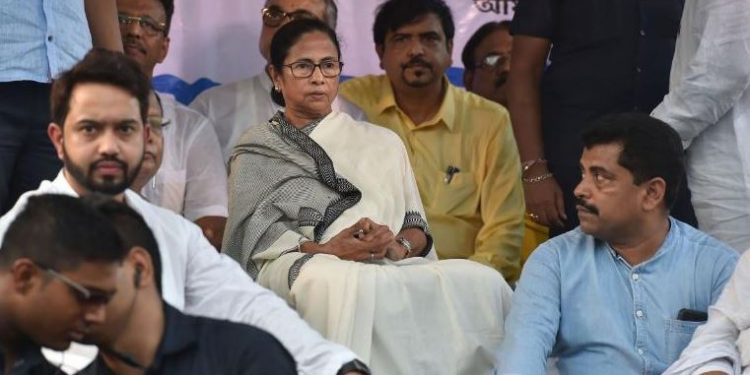Kolkata: ‘Jai Shri Ram’ or victory to Lord Ram — a religious chant to hail one of the most popular gods in Hinduism has become a rallying cry and a tool of Hindu mobilisation for the BJP across the country as well as in Bengal where the saffron party has gained massive political prominence in the last few years.
Though hailing and worshiping of Lord Ram, a Hindu deity and the seventh Avatar of Lord Vishnu has been going on in India for centuries, the chant ‘Jai Shri Ram’ first gained its popularity during the Ramjanmabhoomi movement in Ayodhya nearly three decades ago when the ‘Kar sevaks’ launched a movement to demolish the Babri Masjid, claiming that it stood on the spot where Ram had been born.
Political analysts say that along with many parts of India, the slogan became popular in Bengal during the 1980s but could not gain a sustained political rhetoric as the then Left Front government handled the situation in an organised manner.
“The ‘Jai Shri Ram’ slogan and posters like ‘Garv se bolo hum Hindu hai’ (proudly say I am a Hindu) thronged the streets of Kolkata during that time. The Ram Rath Yatra organised by BJP leader L.K. Advani also witnessed massive turnout as it passed through Bengal.
“Immediately after that in the 1991 Bengal Assembly elections, BJP fielded 291 candidates across the state, and managed to increase its vote share from 0.51% per cent in 1987 to 11.34 per cent. So Ram and his political significance is not new to Bengal,” political analyst Udayan Bandyopadhyay said.
The growing popularity of the slogan in Bengal has been simultaneous to BJP’s rise in the state in recent years.
It almost spread like wildfire though after one single instance in May, when Chief Minister and Trinamool Congress supremo Mamata Banerjee stopped her car and challenged some BJP activists chanting ‘Jai Shri Ram’ in front of her convoy in West Midnapore district’s Chandrakona.
Banerjee kept losing her cool, and shortly after the 2019 election results were announced when BJP workers chanted ‘Jai Shree Ram’ during her visit to the trouble-hit Naihati-Bhatpara area of North 24-Parganas district, the Bengal Chief Minister was again seen reacting. She even got down from her vehicle, attempted to chase down the saffron party workers and instructed the police to take strong action against all those involved in the act. The next day, a few persons were arrested from the area.
Over the next few days more Trianmool leaders were confronted with the same chants.
The BJP has also capitalised on the issue.
The ruling Bharatiya Janata Party at the Centre claimed Banerjee and her party is disdainful towards Lord Ram and Hindu religion in order to hold on to the minority vote bank in the state. Video clips and memes of the incidents went viral on social media.
BJP MP from Barrackpore, Arjun Singh said 10 lakh post cards with ‘Jai Shri Ram’ written on them will be sent to the Chief Minister’s office and residence.
On the other hand, Banerjee came up with two new slogans ‘Jai Hind’ and ‘Jai Bangla’ (Hail Bengal) to counter the BJP. She urged her party workers to shout out these slogans in reply to BJP’s ‘Ram’ chants.
However, Bandyopadhyay said the Chief Minister committed a ‘fatal mistake’ by reacting to the incident instead of ignoring it. He said Banerjee should have countered the religious sentiment spread by BJP using ‘Jai Shri Ram’ by bringing some developmental agendas of the government to the fore.
“The West Bengal government has failed to handle the issue properly. It gained more prominence after the chief minister herself confronted people for chanting Jai Shri Ram. She has come up with counter slogans like Jai Hind and Jai Bangla which is alright. But a religious sentiment cannot be countered by another aggressive sentiment,” the political analyst said.
Instead, If the government can project some of its developmental agendas in the field of education, employment or industrialisation and remind people of the real problems at hand, the politicisation of Lord Ram and these chants will subside,” he added.
IANS






































